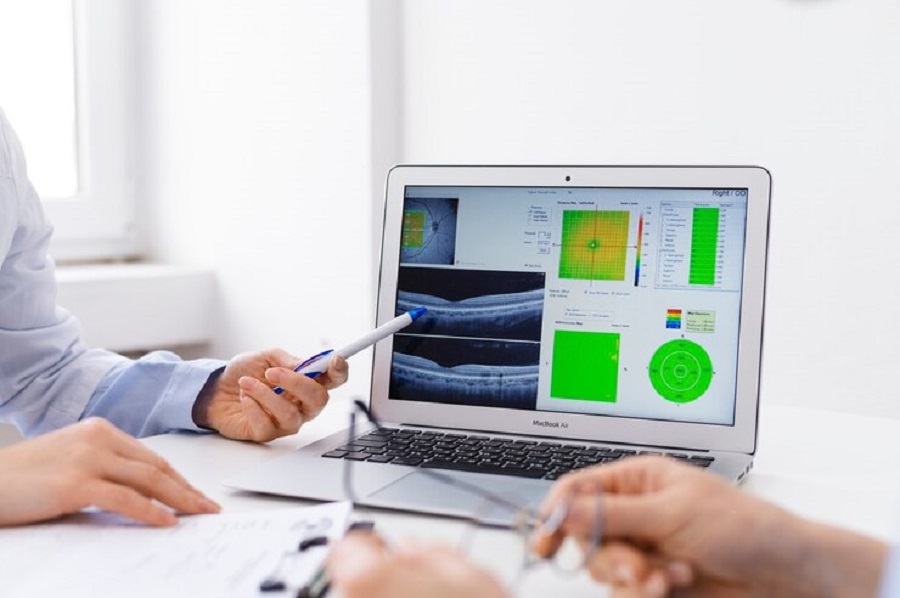The medical world is undergoing a profound transformation, propelled by the explosive growth of digital imaging technologies. At the heart of this revolution lies a specialized field – Imaging Informatics. It plays a pivotal role in the healthcare industry, revolutionizing how medical images are acquired, stored, and interpreted. Mastering this domain opens doors to exciting careers at the forefront of healthcare innovation, and the coveted Certified Imaging Informatics Professional (CIIP) designation serves as your passport to success.
What is Imaging Informatics?
Imagine a vast library, not of books, but of X-rays, MRIs, CT scans, and other medical images. Now, picture yourself as the curator, ensuring these images are stored, retrieved, analyzed, and utilized effectively. That’s the essence of Imaging Informatics.
It’s a fascinating intersection of medical imaging, information technology, and data science. Professionals navigate the labyrinthine world of PACS (Picture Archiving and Communication Systems), understand the intricate language of DICOM (Digital Imaging and Communications in Medicine), and wield data management tools with the mastery of a digital conductor.
Why Go Certified?
Becoming a CIIP signifies expertise in this crucial domain. It’s a powerful credential recognized by healthcare institutions across the globe. Employers actively seek CIIPs for their:
• In-depth knowledge: From workflow optimization to cybersecurity in imaging, you’ll possess a comprehensive understanding of the field.
• Proven competence: The rigorous CIIP exam validates your skills and solidifies your elite position.
Enhanced credibility: The CIIP designation sets you apart, boosting your professional standing and marketability.
Key Areas of Expertise in Imaging Informatics:
• PACS Administration
A central aspect of Imaging Informatics is the management of PACS (Picture Archiving and Communication Systems)– the technology that stores and retrieves medical images. Certified professionals are adept at configuring and maintaining these systems to ensure seamless access to images for healthcare providers.
• DICOM Standards
Understanding and implementing DICOM (Digital Imaging and Communications in Medicine) standards is crucial in the interoperability of medical imaging devices. Certification in Imaging Informatics ensures that professionals are well-versed in these standards, fostering compatibility and consistency in the imaging data exchange.
• Data Management and Analytics
Certified Imaging Informatics professionals are trained to handle vast imaging data efficiently. They leverage analytics to derive meaningful insights from this data, contributing to improved decision-making in patient care and treatment strategies.
The Impact on Patient Care:
• Faster Diagnoses
Certified Imaging Informatics professionals contribute to reducing the time it takes to diagnose and treat patients. Through optimized workflows and efficient data management, they ensure that medical images are quickly accessible to healthcare providers, expediting the diagnostic process.
• Enhanced Collaboration
Imaging Informatics fosters collaboration among healthcare teams. Certified professionals facilitate the sharing of imaging data across departments and institutions, leading to more comprehensive and well-informed patient care.
• Improved Treatment Planning
By harnessing the power of imaging data, healthcare providers can tailor treatment plans more precisely. Certified Imaging Informatics professionals contribute to accurate treatment planning, leading to better patient outcomes.
The Future of Imaging Informatics:
• Artificial Intelligence (AI) Integration
The integration of AI in medical imaging is a burgeoning field. Certified Imaging Informatics professionals are at the forefront of incorporating AI algorithms into their workflows, enhancing diagnostic accuracy and efficiency.
• Telemedicine and Remote Imaging
As telemedicine gains prominence, Imaging Informatics becomes instrumental in ensuring the seamless transmission and interpretation of medical images in remote settings. Imaging informatics training equips professionals to navigate the challenges and opportunities in this evolving landscape.
• Continuous Learning and Adaptation
The field of Imaging Informatics is dynamic, with technological advancements occurring rapidly. Certified professionals are committed to continuous learning staying abreast of emerging technologies and industry best practices.
Certified Imaging Informatics is a significant milestone in the modernization of healthcare. It plays a massive role in effectively managing and interpreting medical imaging data. As technology advances, the demand for skilled professionals in this field grows. By obtaining certification in Imaging Informatics, you validate your expertise and contribute significantly to improving patient care, diagnostic accuracy, and the overall efficiency of healthcare systems. Embracing this intersection of technology and medicine is not just a career choice; it is a commitment to shaping the future of healthcare.

